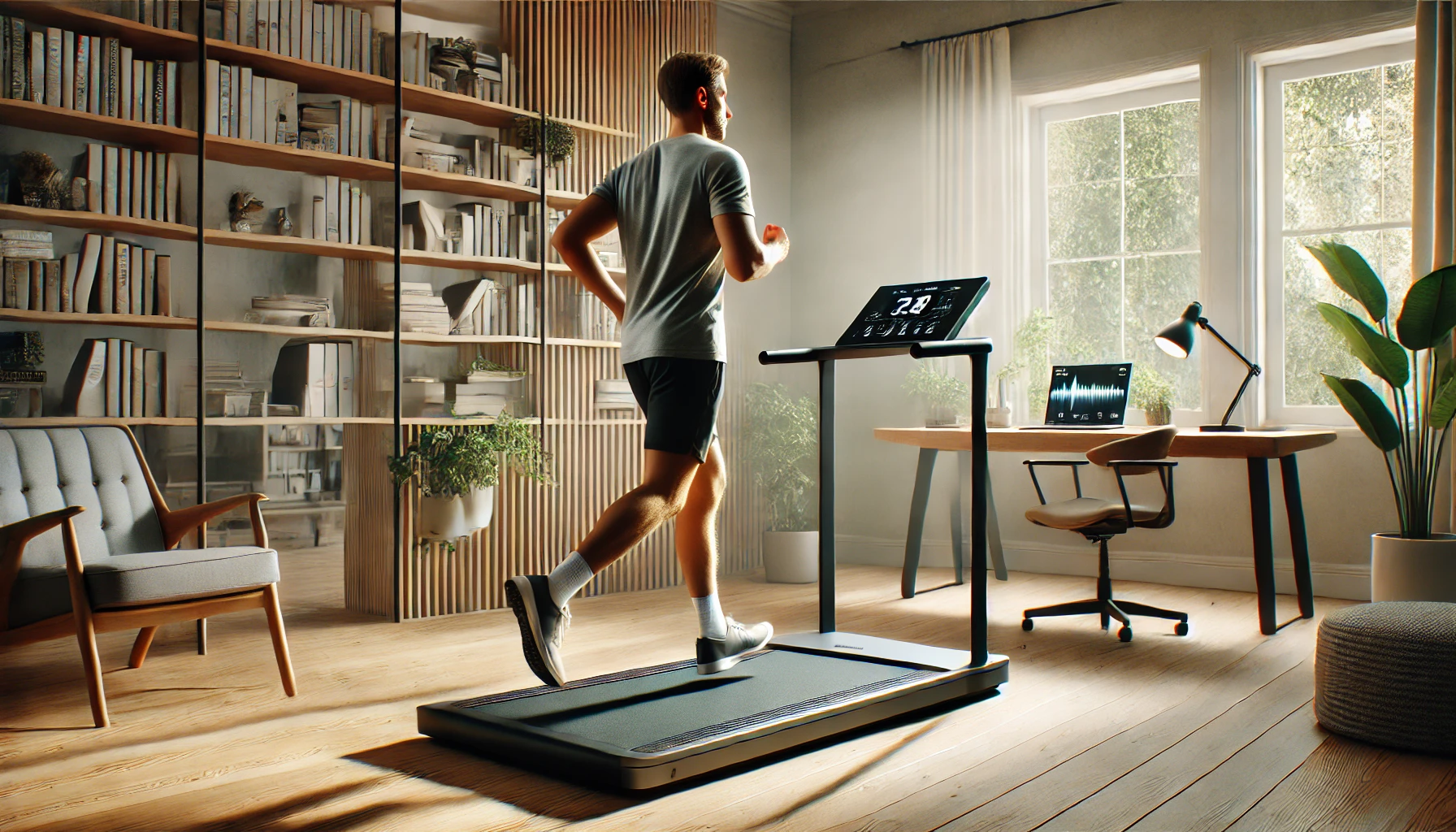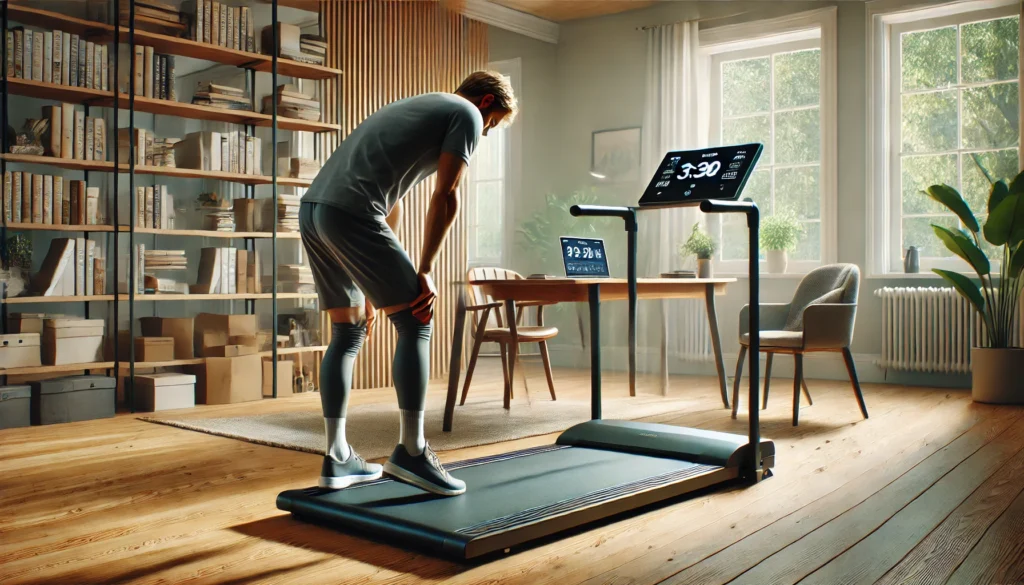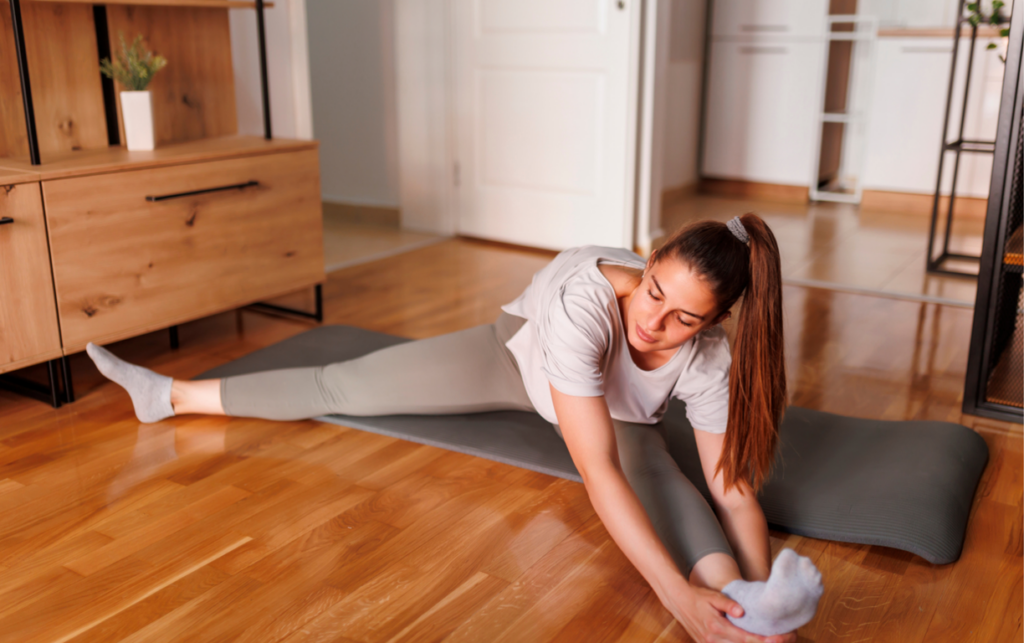Physical Address
304 North Cardinal St.
Dorchester Center, MA 02124
Physical Address
304 North Cardinal St.
Dorchester Center, MA 02124

If you're looking to spice up your indoor workout routine, a walking pad might be just what you need. These compact treadmills have gained popularity for their convenience and versatility, making it easy to stay active without leaving your home. But have you ever wondered if you can jog on a walking pad?
If you’re looking to spice up your indoor workout routine, a walking pad might be just what you need. These compact treadmills have gained popularity for their convenience and versatility, making it easy to stay active without leaving your home. But have you ever wondered if you can jog on a walking pad?

Yes you can jog on a walking pad but there are several factors to consider for a safe and effective workout. Here are the steps you should follow to jog on a walking pad:
Before starting your jogging routine ensure that your walking pad is designed for running or jogging. Look for models that support higher speeds and have a wider belt to accommodate your stride.
Start at a lower speed to warm up your muscles. Gradually increase the speed to a comfortable jogging pace. Most walking pads have a speed range from 0.5 to 4 miles per hour. A speed between 3 to 4 miles per hour is typically suitable for jogging.
Keep your posture upright with your shoulders relaxed. Engage your core and maintain a slight bend in your elbows while swinging your arms naturally. Avoid leaning forward or backward excessively.
Use a heart rate monitor if available. Aim for a heart rate that fits your fitness level. Keeping track of your heart rate ensures that you jog within your limits and promotes safety.
Keep a water bottle nearby. Hydration is key during any workout session. Take quick sips whenever you can without losing focus on your jogging.
Pay attention to how your body feels during your jog. If you experience pain or discomfort it’s wise to reduce the speed or take a break.
After jogging reduce the speed gradually to allow your heart rate to lower. Spend a few minutes walking at a slow pace before stopping completely.
Incorporate short breaks into your jogging routine if necessary. Walk for a few minutes between jogging intervals to give your body recovery time.
By following these steps you can enjoy jogging on a walking pad safely and effectively while reaping the benefits of staying active at home.
Walking pads offer numerous advantages for maintaining an active lifestyle, especially in the comfort of your home. Their compact design and functionality make them a popular choice for those looking to incorporate movement without the constraints of traditional gym equipment.
Using a walking pad allows you to exercise anytime without needing to leave your home. You can easily integrate walking or jogging sessions into your daily routine while multitasking, such as watching TV or working from home. The compact nature of walking pads means they can fit in small spaces, making them ideal for apartments or homes with limited room for fitness equipment. Additionally, they are often lightweight, making them easy to move and store when not in use.
Walking pads provide a low-impact exercise option that is gentle on your joints. This is particularly beneficial for those recovering from injuries or for individuals with joint issues. The cushioned surface of many walking pads reduces the strain on your knees and hips, promoting safer workouts. This means you can enjoy longer exercise sessions and stay active without experiencing excessive wear and tear on your body. By incorporating a walking pad into your fitness routine, you can engage in effective cardiovascular workouts that support your overall health and well-being.

Jogging on a walking pad is a practical option for achieving cardio goals indoors. It offers a flexible way to incorporate cardiovascular exercise into your routine while multitasking at home.
Yes jogging on a walking pad is recommended as long as you use the appropriate equipment and follow best practices. Many models are designed to support jogging speeds and include features that promote a smooth experience. If your walking pad has a sturdy construction and a maximum speed suitable for jogging it can effectively mimic outdoor running. However adjusting your expectations is essential; the experience differs from running on a treadmill or an outdoor track. Start at a lower speed to gauge your comfort level before increasing intensity.
Prioritizing safety while jogging on a walking pad is crucial. Here are key considerations:
| Safety Tips | Description |
|---|---|
| Use Grip-Quality Shoes | Wear shoes with proper grip to prevent slipping. |
| Maintain Proper Posture | Keep your back straight and shoulders relaxed to avoid strain. |
| Stay Aware of Your Surroundings | Ensure your jogging area is free from obstacles. |
| Listen to Your Body | If you feel pain or discomfort reduce your speed or stop. |
| Hydrate Regularly | Keep water nearby and take breaks when needed to prevent dehydration. |
| Adjust for Heart Rate | Monitor your heart rate to stay within a safe range for your fitness level. |
Following these safety guidelines will help you enjoy a safe and effective jogging workout on your walking pad, promoting overall fitness and well-being.
Jogging on a walking pad can be an effective and enjoyable way to stay active indoors. Follow these guidelines to ensure a successful workout.
To begin jogging on a walking pad, ensure it is set up in a secure and spacious area. Place the walking pad on a flat surface free from obstacles. Ensure you have access to power and that the walking pad is plugged in. Adjust the inclination if your model allows it to enhance workout intensity. Before you start, warm-up by walking for 5 to 10 minutes at a comfortable pace to prepare your muscles and joints.
Start with a speed that allows you to comfortably transition from walking to jogging. A speed between 4 to 6 miles per hour is generally suitable for most individuals. Gradually increase your speed as you become more comfortable with jogging on the walking pad. Monitor your pace and adjust the speed settings in small increments to find a rhythm that feels right for you. Always remember that your safety and comfort are the top priorities.
Maintain proper form while jogging on a walking pad to prevent injuries. Stand tall with your chest lifted and shoulders relaxed. Keep your arms bent at 90 degrees and swing them naturally as you jog. Your feet should land underneath your body rather than in front of you to maintain proper alignment. Focus on a light footfall to minimize impact on your joints. Keep your eyes forward and breathe rhythmically to enhance endurance during your workout.

To maximize your jogging experience on a walking pad focus on preparation and technique. Employ strategies such as warming up effectively and incorporating interval training for enhanced results.
Begin each jogging session with a warm-up to prepare your muscles and joints. Spend 5 to 10 minutes walking at a comfortable pace on the walking pad. Gradually increase your speed to get your heart rate up. Consider adding dynamic stretches such as leg swings arm circles and torso twists for 2 to 3 minutes before jogging. These movements enhance flexibility and reduce the risk of injury.
Incorporate interval training into your jogging routine for improved cardiovascular fitness and variety. Alternate between periods of jogging and walking to enhance stamina and challenge your body. For example jog for 1 minute followed by 2 minutes of brisk walking. Repeat this cycle for a total of 20 to 30 minutes. As you progress feel free to increase the jogging duration or decrease the walking duration adjusting as needed to maintain your comfort and challenge level.
Proper maintenance and care of your walking pad will ensure its longevity and optimal performance. Regularly attending to cleaning and maintenance checks will keep your equipment in great shape.
To maintain a clean walking pad, start by unplugging it from the power source. Use a soft cloth dampened with mild soap and warm water to wipe down the surface. Pay special attention to the walking area where sweat and dirt can accumulate. After cleaning, dry the surface with a clean towel to prevent moisture buildup. Avoid harsh chemicals and abrasive materials that could damage the pad. Additionally, check for any debris under the pad and remove it to maintain functionality.
Perform regular maintenance checks to ensure your walking pad operates smoothly. Monthly inspections should include checking for loose screws and ensuring the power cord is in good condition. Make sure the walking surface is level, and the pad is securely positioned on the floor. Periodically inspect the belt for wear and tear; if you notice signs of fraying or slipping, it’s time for replacement. Finally, consider lubricating the walking belt every six months or as recommended by the manufacturer’s guidelines to reduce friction and prolong its life.
Jogging on a walking pad can be a great way to meet your fitness goals while staying indoors. With the right equipment and safety measures in place you can enjoy a low-impact workout that fits seamlessly into your daily routine. Remember to prioritize proper form and listen to your body to ensure a safe experience.
By incorporating interval training and maintaining your walking pad you can maximize your workout benefits. Embrace the convenience of this versatile exercise tool and make it a valuable part of your fitness journey. Staying active at home has never been easier.